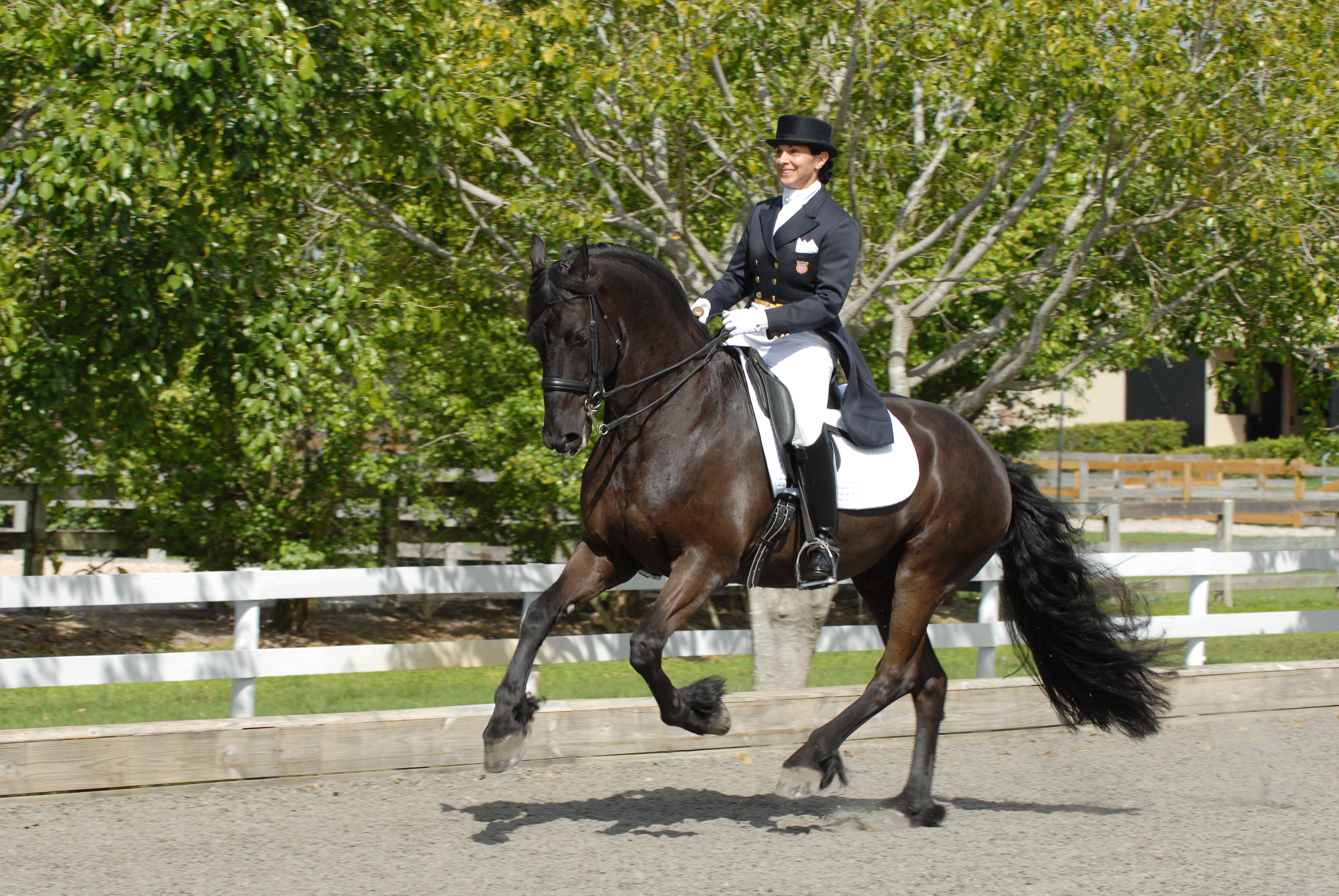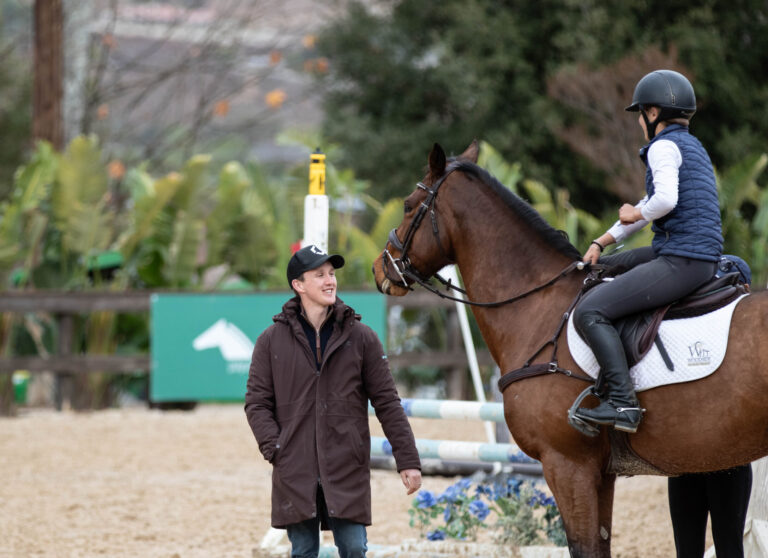
Your naturally occurring mental skills are like superpowers. Similar to a superhero, you were born with them and now you must make sure that you use them for good and not evil. How does this relate to you as a rider? Well, one of the superpowers you were born with is the voice in your head. It is an incredible tool that you must be aware of, utilize wisely and rein in when necessary. If you leave this skill unattended it can run amuck and cause a lot of needless trouble.
Have you ever caught yourself saying something similar to these statements in your head during a ride? I am so stupid—I can’t believe I made that mistake again or I am the worst or Everyone here is so good, why am I wasting my time and money at this show? These are examples of negative self-talk that can lead to poor focus, lack of confidence and a less-than-optimal performance. Working to build your awareness of how to speak to yourself, halting your negative self-talk and editing your vocabulary are all things you can start doing today to build consistency in your riding.
Jane Savoie: Helping Equestrians Create Positive Attitudes
Jane Savoie has been an inspiration to equestrians for years. She is a dressage competitor, instructor, coach and member of the U.S. Equestrian Team. She is the author of five books, including the classic That Winning Feeling, in which she teaches readers to train their minds and create attitudes that help build mental strength. Jane is constantly creating new programs to help riders better understand their horses and their own learning process. In a recent conversation, we focused on one of her favorite mental skills, self-talk, and she described her wonderful perspective as well as some concrete suggestions for improving your internal conversations.
Awareness of Your Inner Dialogue
“We talk to ourselves all day long: We can’t go more than 11 seconds without saying something,” says Jane. “It is usually something harmless … but when it’s negative then you are undermining yourself. You need to learn to be aware enough to censor your own speech because those negative thoughts are going to pop up. Sometimes I will be in the middle of giving a talk and I will give myself a half-halt to censor my speech—even after doing this for 30 years … but you [can] do something proactive to reprogram yourself.”
When you reflect on your own self-talk, what do you notice? Are you immediately aware that you can improve what you say to yourself? Or do you not have a clear sense of your self-talk? Often these messages run like a software program that starts up automatically when you power up your computer, and therefore it is critical to remember that they are under your control.
To be more aware of your patterns of thought, try using a special reminder at the barn for several days. You can put a Post-it on your helmet bag or even inside your helmet, tack an index card in the lid of your trunk or set the lock screen of your phone to say something like, “Think smart” or “Support yourself.” These sorts of targeted reminders can tune up your awareness before a ride and enable you to make more positive choices to support your psychological strength and focus.
Halting Negative Thoughts
“You need to make some kind of ‘Stop’ [if you catch yourself saying something negative],” explains Jane. “You might say something to yourself like, Oh, I am such an uncoordinated idiot, but then you could put a stop sign up at the end of the road in your mind’s eye. Or you could see yourself erasing the [negative] words from a blackboard or see a big red ‘X’ through the words … You then have to replace them with something positive.”
Once you have heightened awareness of your self-talk, you want to have a surefire, consistent method in place for halting your negative language in its tracks. This method is called a “thought-stopping cue,” as its job is to completely stop the negative and give you a chance to switch gears. Jane provided some great examples of visual cues (the stop sign, red “X” and erasing a blackboard). You can also create a word or phrase (“change gears” or “delete”) or a physical cue (a deep breath with a big exhale out of your mouth or glancing up at the sky and back down to a specific point in front of you).
Note that whatever thought-stopping cue you use, a positive, solution-oriented statement to channel your energy toward success must come next. For example, pretend you say, “I always chip the single oxer” to yourself as you stand ringside at the horse show. You immediately use your thought-stopping cue of shaking your right hand while imagining your negative thought flying out of your fingers. In this case, you would finish by telling yourself two specific positive things that could help you ride a consistent rhythm effectively: “I count loudly in my head and keep my elbows loose on the way to the single.”
Words to Permanently Delete
“Eliminating words like ‘don’t’ and ‘what if’ are a good start,” says Jane. “I hear trainers teach and ‘don’t’ is such a common instruction. Eliminate the word ‘don’t’ from your vocabulary. One of the other words that students say out loud or verbalize internally is ‘what if’… As soon as you hear yourself say ‘what if,’ stop yourself and say ‘so what if’ and then follow it up with ‘I can handle it.’ For example, ‘So what if I get bucked off, I can get back on.’”
As you can see from Jane’s suggestions, there are words and phrases that can be permanently censored from your self-talk. She mentions two that are a great start: “don’t” and “what if’.”
“Don’t”: You may know intellectually what “don’t” means, but your body only understands the action word it is connected to and immediately starts working on how to make that happen. “Don’t look down” triggers your mind’s eye to imagine what looking down feels like and then you end up strengthening a bad habit. Each time you are tempted to say “Don’t ____” to yourself as an instruction, replace it with what you want to have happen instead. “Don’t look down” can become something like, “Look up at a focal point,” which is a specific positive action that your body can easily help you achieve.
“What if”: You create stress with your self-talk when you start sentences with “what if” because it is focused on trying to predict the future—which is absolutely out of your control. “What if he spooks?” It’s true, your horse may spook because he is an animal and is not 100 percent under your control at any time. You can change your language to focus on the present: “I keep my heels down to stay connected to my horse.” Or, as Jane suggests, follow up a “what if” with how and why you can handle that scenario: “What if he spooks? I am keeping my heels down and eyes up to stay in balanced in the tack.” Either way, the emphasis is on the solution and not the worrisome uncertainty of the situation.
In addition to these suggestions, be sure to brainstorm and add other words to delete from your vocabulary. For example, “never,” “if/then” and “can’t” are unproductive and can be terms you eliminate.
As you go forward in these next few weeks of riding, be aware of what triggers your negative self-talk. Stay on the lookout, catch it early and then change your internal messaging so that it helps you rather than hurts you. As we learned from Spiderman, “With great power, comes great responsibility.” Never underestimate how much you and your horse rely on your positive mindset to meet the challenges you face as a team, and do what it takes to keep it locked in place.
This article was originally published in the January 2018 issue of Practical Horseman.











